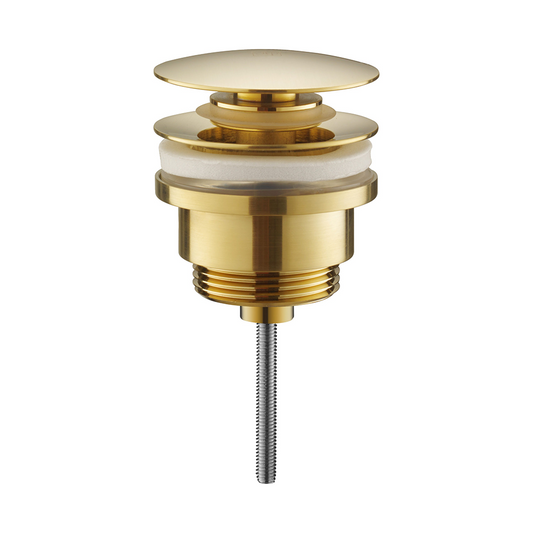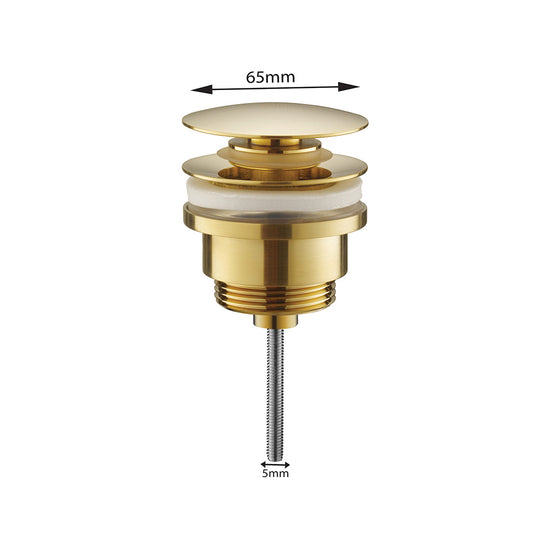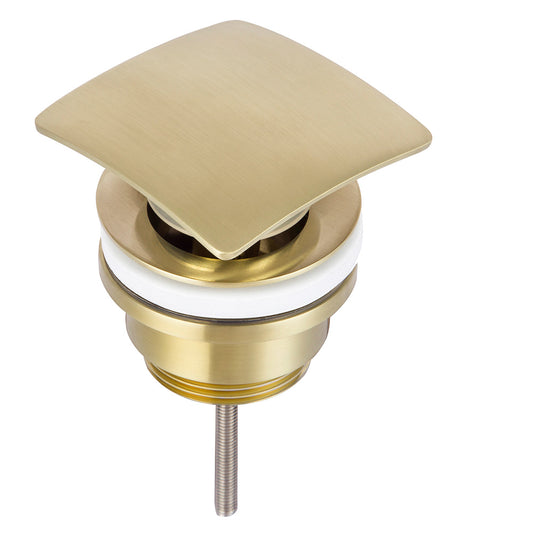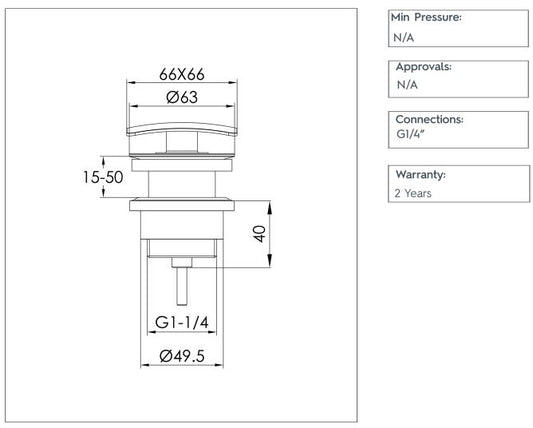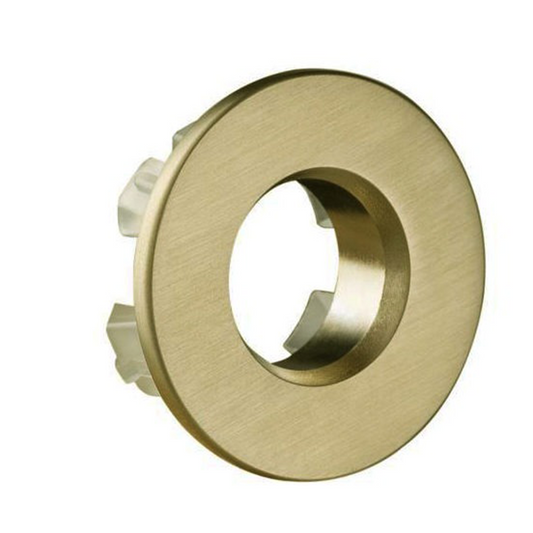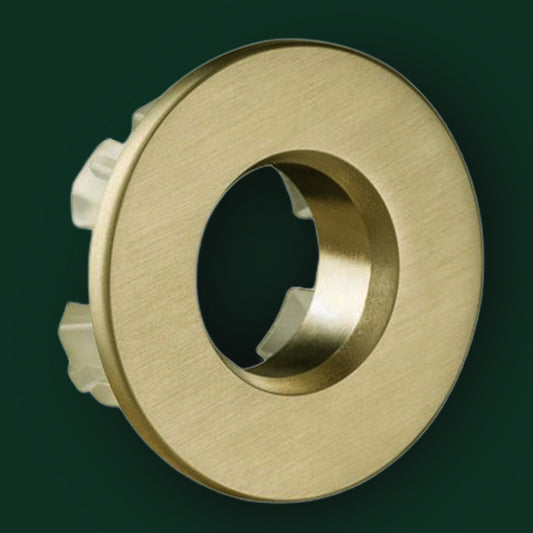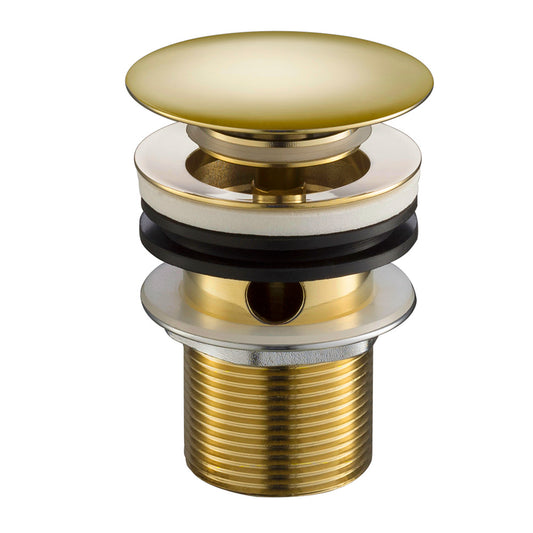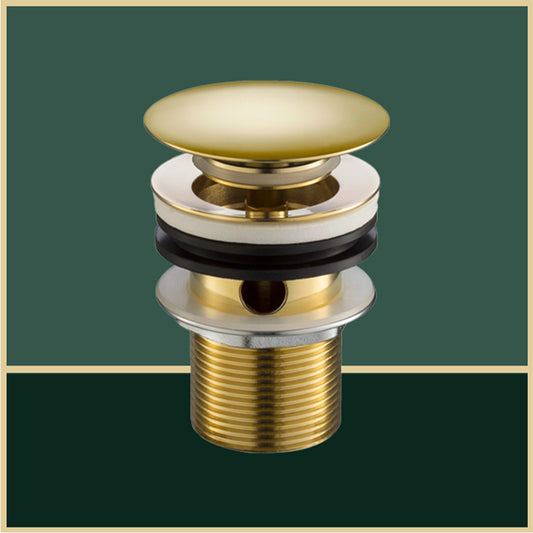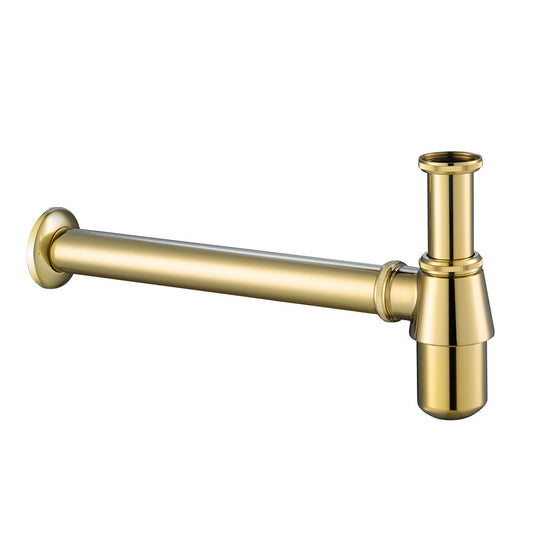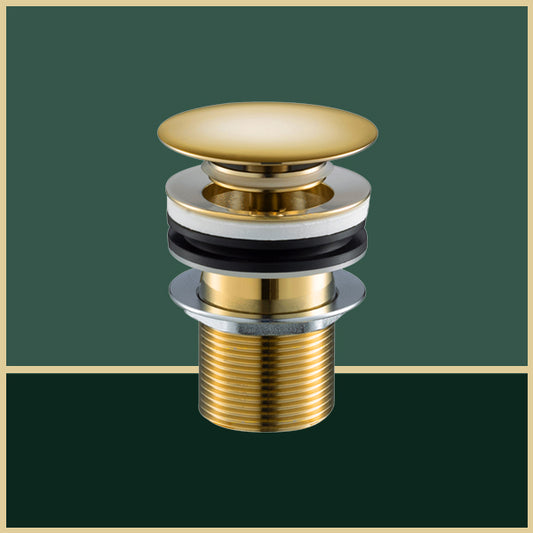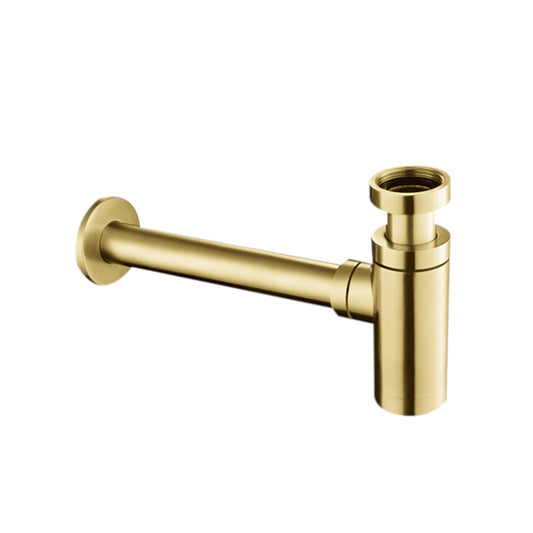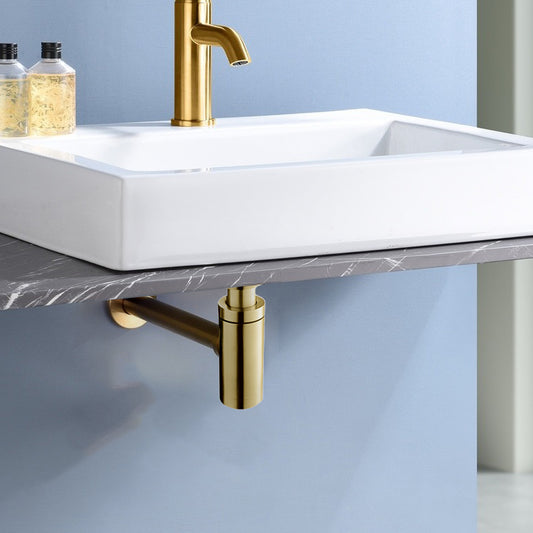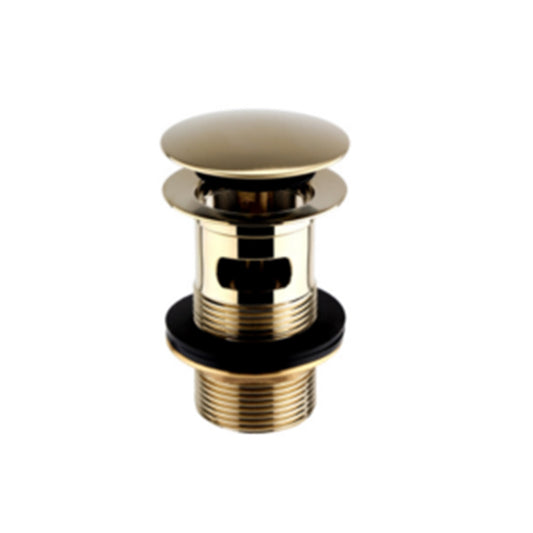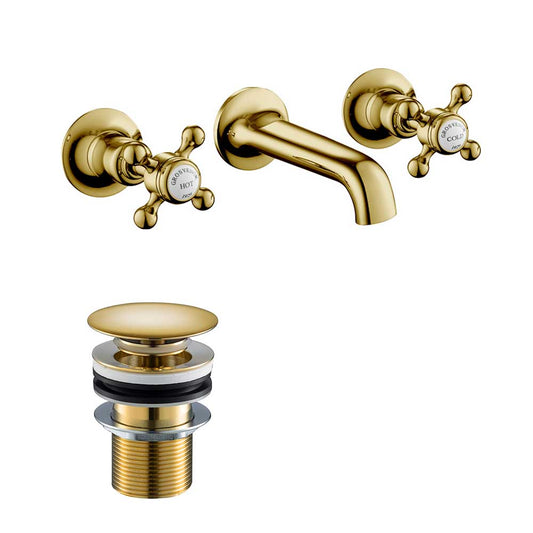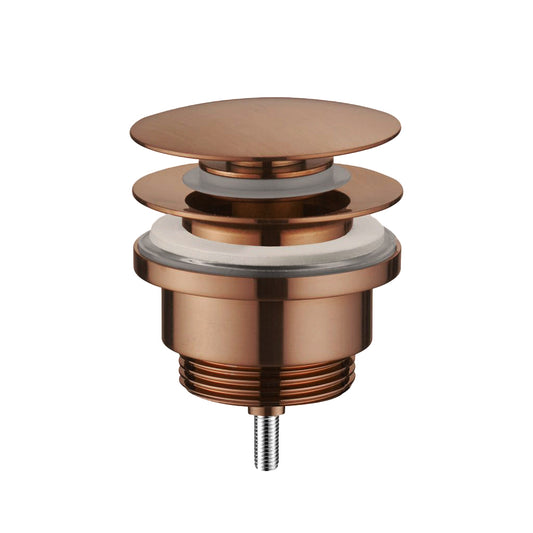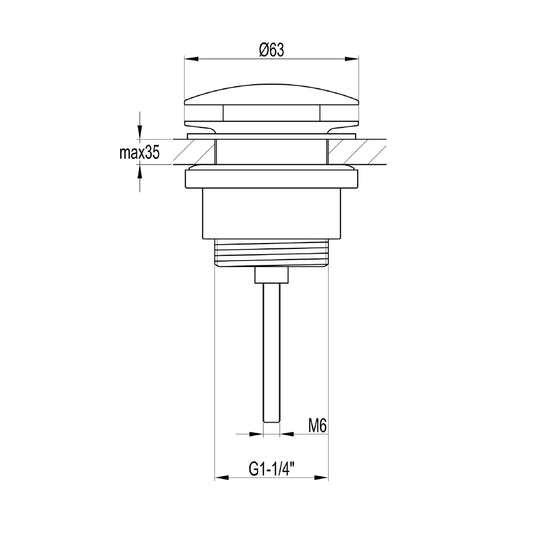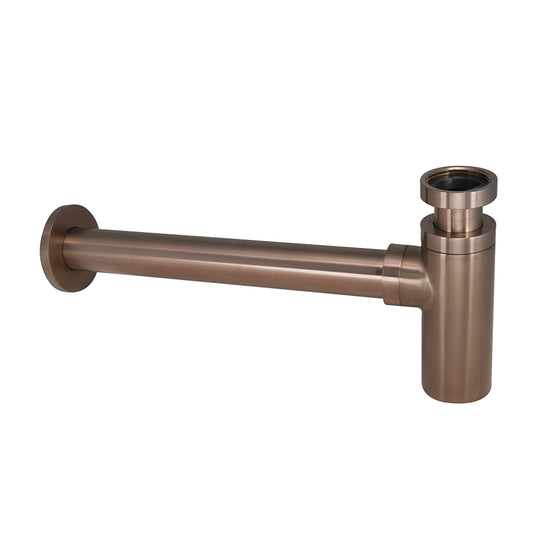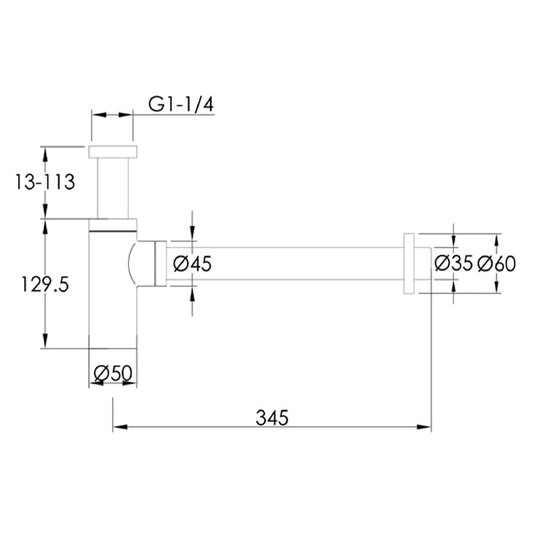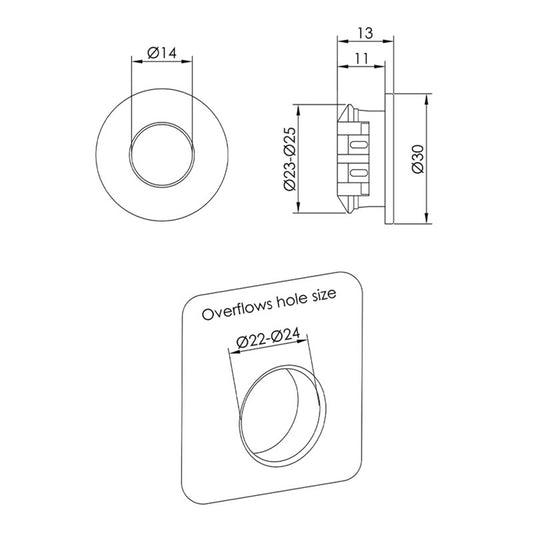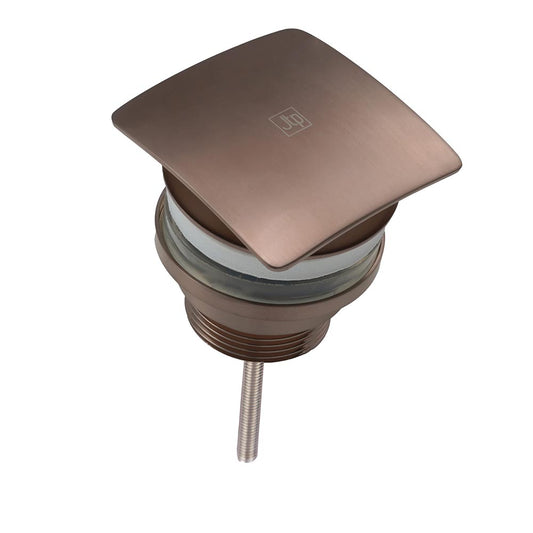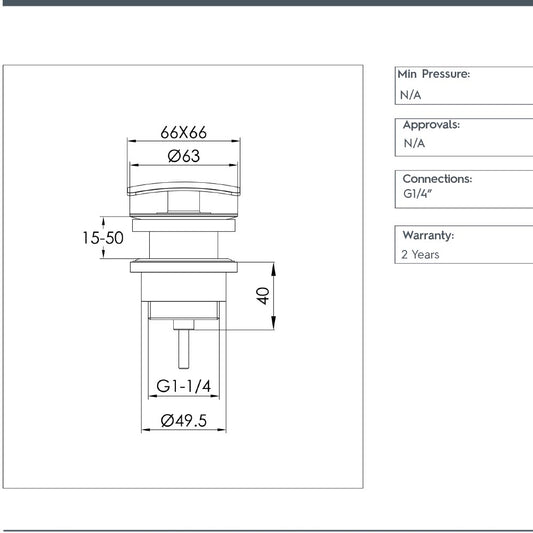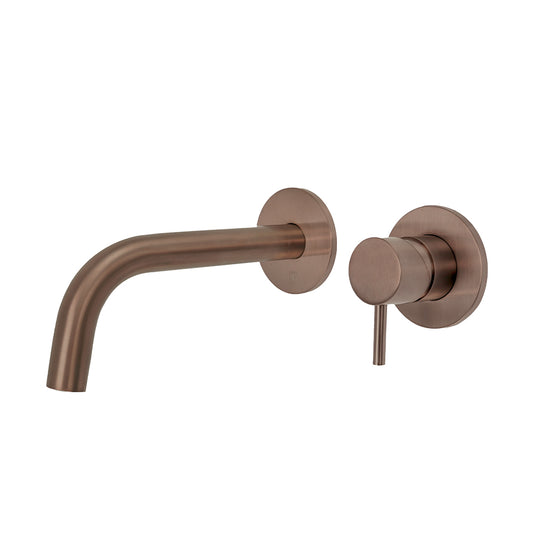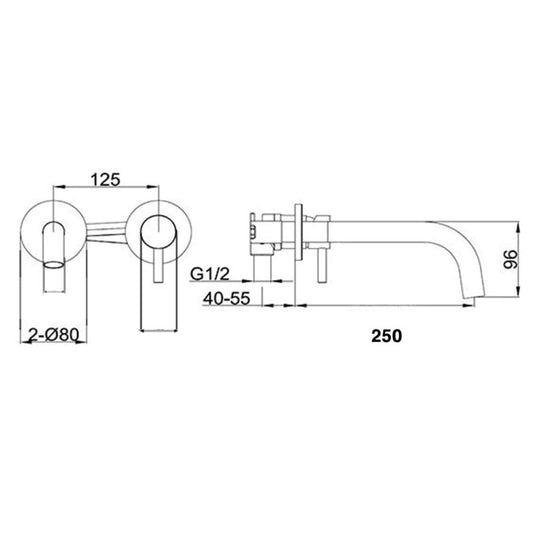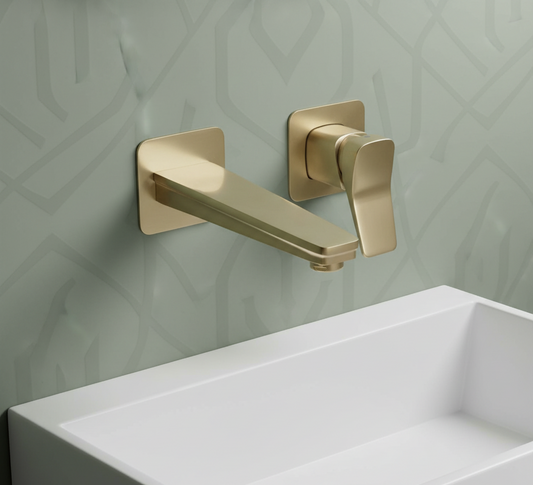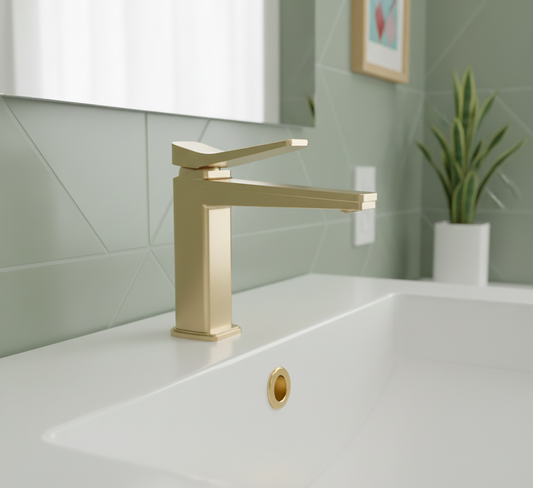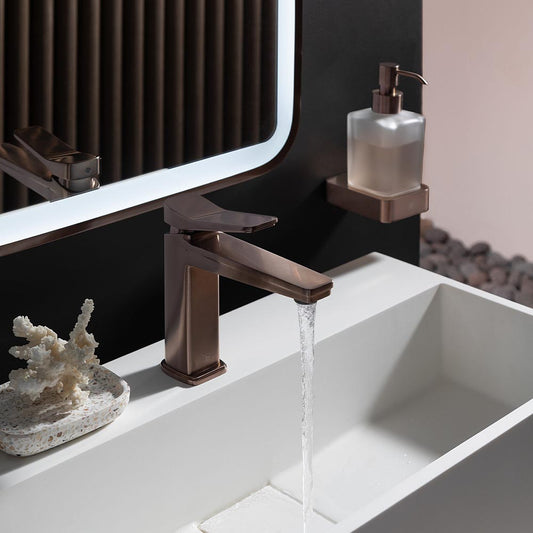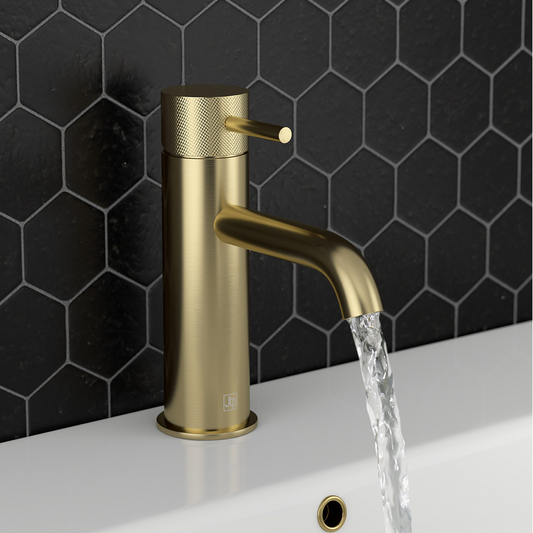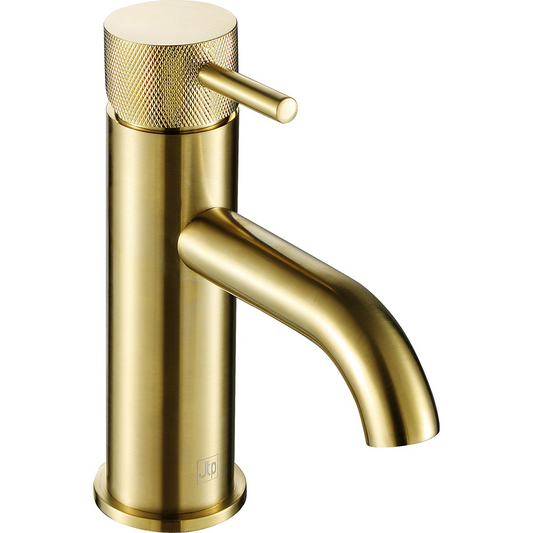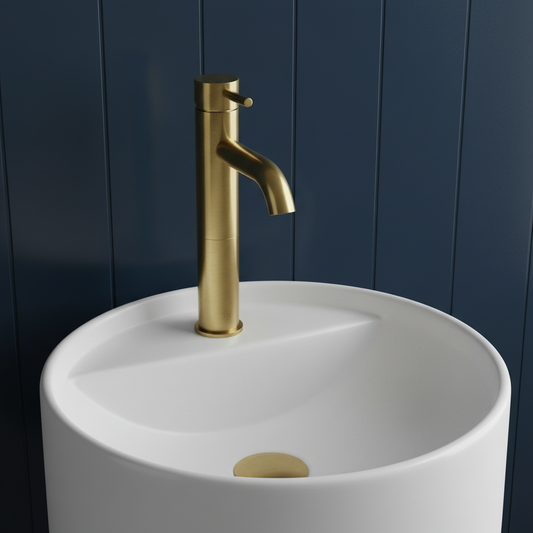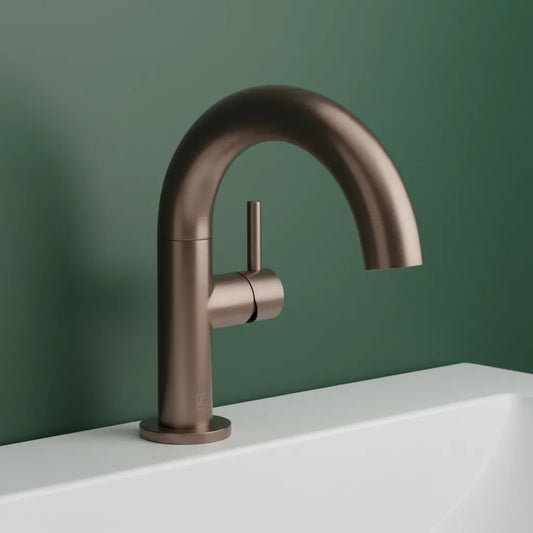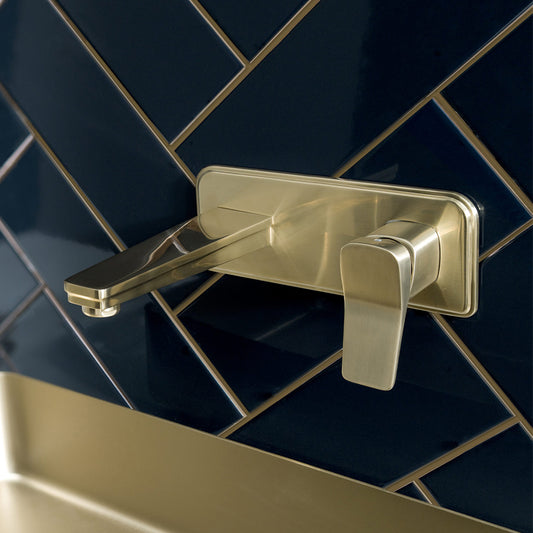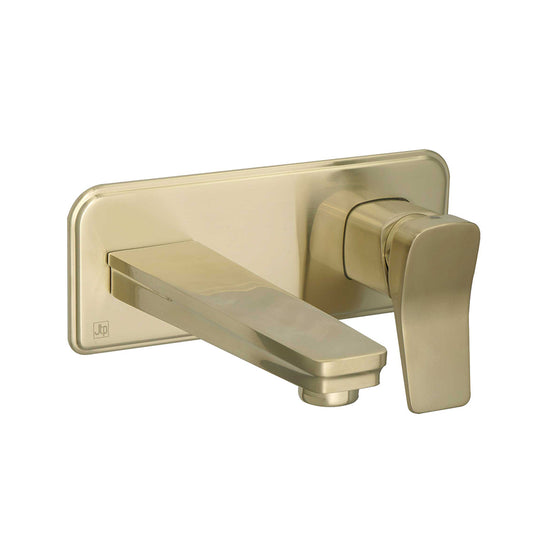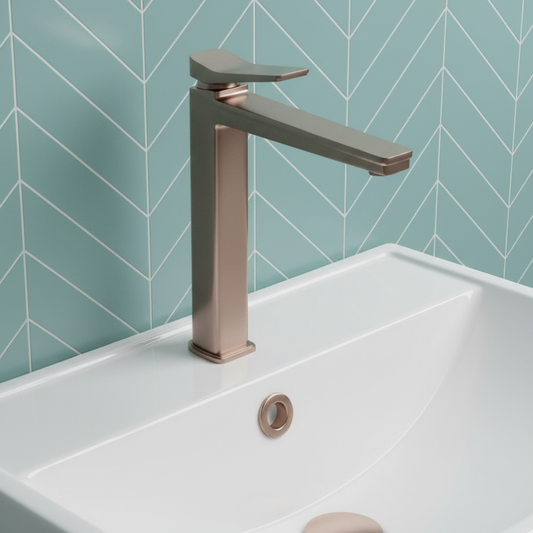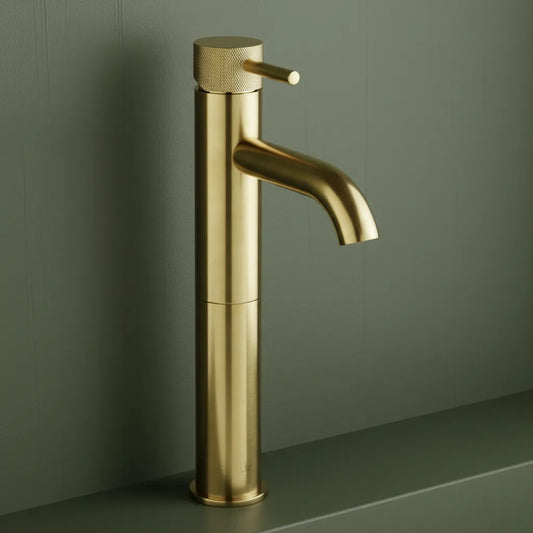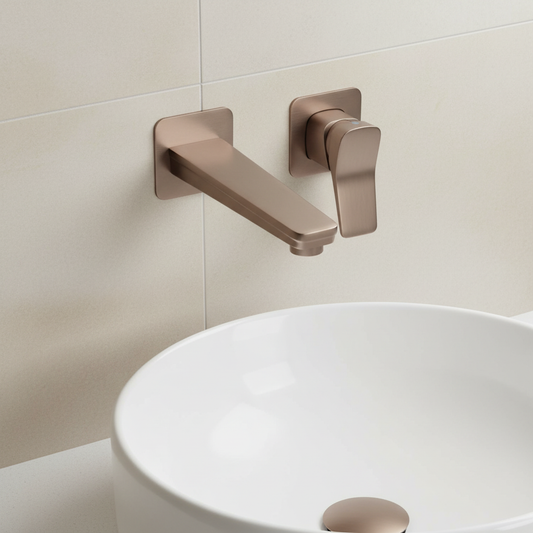Slotted vs. Unslotted Basin Wastes: Choosing the Right Option for Your Bathroom
Table Of Contents:
-
The Battle of Basin Wastes: Slotted vs. Unslotted
→ -
Basin Wastes Collection
→ -
Introduction to Basin Wastes
→ -
Types of Basin Wastes
→ -
Overflow
→ -
Installation Differences
→ -
Factors to Consider
→ -
Maintenance and Cleaning
→ -
Future Trends
→ -
Conclusion
→
The Battle of Basin Wastes: Slotted vs. Unslotted – Which Reigns Supreme?
Discover the essential differences between slotted and unslotted basin wastes in our in-depth guide. This blog provides a clear comparison of these crucial bathroom components, detailing their design variations, benefits, and installation requirements. You’ll learn how each type impacts functionality and aesthetics, explore various styles like click clack and pop-up, and gain practical maintenance tips. Whether you’re updating your current setup or selecting new fixtures for a renovation, this guide will help you choose the right basin waste to ensure both style and efficiency in your bathroom.
Introduction to Basin Wastes

Basin wastes are integral components in sink drains that manage the flow of water and prevent debris from clogging the drain. They play a crucial role in allowing the sink to fill and drain properly while preventing water leakage onto the floor. Understanding the different types of basin wastes helps in choosing the right one to match your bathroom's needs and aesthetics.
Types of Basin Wastes
 |
Slotted Basin WastesSlotted basin wastes are designed with small openings or slots around the rim to manage excess water. These slots are crucial for sinks equipped with an overflow system, allowing any additional water that might spill over to drain away safely. This feature helps to prevent water from overflowing onto the bathroom floor, which can lead to potential water damage and mess. The alignment of the slots with the sink's overflow system is essential for proper functionality. This makes slotted basin wastes ideal for high-traffic bathrooms or households where accidental overflows are a concern. |
In terms of aesthetics, slotted basin wastes provide a functional yet unobtrusive solution. They blend seamlessly with a variety of sink designs while offering practical benefits. However, their installation requires precise alignment to ensure that the overflow mechanism works efficiently. Regular maintenance involves checking the slots for any blockages or debris that could hinder their performance. Overall, slotted basin wastes are a practical choice for ensuring that excess water is effectively managed, maintaining both safety and cleanliness in the bathroom.
Unslotted Basin WastesUnslotted basin wastes are characterized by their sleek design, which lacks the additional slots found in slotted wastes. They function solely through the primary drain, making them suitable for sinks without an overflow feature. This type of waste provides a clean, minimalist look that complements modern bathroom designs, as it avoids the additional openings that might disrupt the sink's appearance. Unslotted basin wastes are often chosen for their aesthetic appeal, particularly in contemporary or stylish bathroom settings where simplicity is key. |
 |
While unslotted basin wastes offer a streamlined design, they are best suited for environments where the risk of overflow is minimal. They do not manage excess water like slotted wastes, making them less ideal for high-traffic bathrooms or those prone to accidental overflows. Maintenance involves regular checks to ensure that the main drain is clear of any blockages or buildup. Their straightforward installation and clean look make unslotted basin wastes a popular choice for modern bathrooms seeking a sleek and uncomplicated solution.
 |
Click Clack Basin WastesClick clack basin wastes are popular for their user-friendly design, featuring a spring-loaded mechanism that operates with a simple push-button action. To close the waste, you push the button down, and a click sound confirms that it's sealed. Pushing the button again opens the waste, making it easy to operate with minimal effort. This type of waste is favored for its convenience and reliability, as it provides a hands-free way to manage the sink’s drainage, which is particularly useful in busy or frequently used bathrooms. |
In terms of maintenance, click clack basin wastes are relatively low-maintenance. They typically require occasional cleaning to prevent buildup that could affect the spring mechanism. The simplicity of the design means there are fewer parts that could potentially fail, making it a durable choice. However, if the spring mechanism does wear out or malfunction, it may need replacement. Overall, click clack basin wastes offer a practical and modern solution for managing sink drainage, combining ease of use with effective functionality.
Flip Top Basin WastesFlip top basin wastes are distinguished by their disc-shaped design, which operates through a rotating action. To close the waste, you push the disc down, and to open it, you flip it up. This mechanism provides a traditional touch with a functional approach to managing water drainage. Flip top wastes are known for their reliability and straightforward operation, making them a solid choice for various bathroom styles. However, they do require regular maintenance to ensure that the disc remains clean and free from grime that could impede its function. |
 |
The aesthetic appeal of flip top basin wastes lies in their classic design, which can add a touch of elegance to a bathroom. Their rotating mechanism, while practical, might need more frequent cleaning compared to other types of basin wastes. Regular upkeep involves wiping down the disc to prevent buildup and ensuring the mechanism functions smoothly. Overall, flip top basin wastes combine traditional design with practical functionality, offering a stylish and dependable option for managing sink drainage.
 |
Plug and Chain Basin WastesPlug and chain basin wastes feature a classic design with a plug attached to a chain fixed to the sink. The plug is used to seal the drain and can be removed using the chain, which is a traditional mechanism often seen in vintage-style bathrooms. This type of waste is favored for its simplicity and ease of use, particularly in older or retro-inspired bathroom designs. The chain allows for straightforward management of the plug, making it a reliable choice for those who appreciate a more conventional approach. |
While plug and chain basin wastes are functional, they require a specific type of sink with a chain hole, which may not suit all modern bathroom designs. The chain can also become a point of potential mess if not kept clean. Regular maintenance involves ensuring the chain and plug are free from rust or damage and that the plug fits securely into the drain. Despite these considerations, plug and chain basin wastes offer a nostalgic and dependable option for those seeking a traditional style in their bathroom setup.
Pop-Up Basin WastesPop-up basin wastes are operated by a lever connected to the tap, allowing you to manage the waste with a simple pull or push of the lever. Pulling the lever closes the waste, while pushing it opens it. This mechanism is designed to keep hands dry and provides a convenient way to control the sink’s drainage without direct contact with the plug. Pop-up wastes are popular for their user-friendly design and ease of operation, making them a practical choice for modern bathrooms. |
 |
Despite their advantages, pop-up basin wastes may require occasional maintenance as the lever mechanism can wear out over time. Regular checks are needed to ensure that the lever operates smoothly and that there are no leaks. Cleaning the mechanism and ensuring it remains free from debris are key to maintaining its functionality. Overall, pop-up basin wastes offer a contemporary solution with a focus on convenience and hygiene, enhancing the user experience in any modern bathroom.
 |
Freeflow Basin WastesFreeflow basin wastes are characterized by their permanently open design, allowing water to drain continuously without any closing mechanism. This type of waste is suitable for sinks where overfilling is less of a concern, as it does not provide a way to seal the drain. Freeflow wastes are typically used in utility sinks or locations where constant drainage is acceptable and the risk of overflow is minimal. |
The design of freeflow basin wastes ensures that water always drains away, which can be advantageous in settings where frequent use is expected. However, because they do not offer a way to close the drain, they may not be suitable for sinks where overflow prevention is necessary. Maintenance involves ensuring that the open waste is free from debris and that the drainage is functioning properly. Overall, freeflow basin wastes provide a straightforward solution for specific applications where continuous drainage is acceptable.
Overflow
The overflow is a crucial feature in many bathroom sinks designed to prevent overfilling and potential water damage. It consists of a small, strategically placed hole near the top of the sink that channels excess water away from the basin through an overflow pipe. This mechanism not only ensures that water does not spill onto the floor, maintaining safety and cleanliness, but also helps to manage high water levels effectively, particularly in sinks equipped with slotted basin wastes. The overflow system is essential for maintaining both functionality and safety in modern bathroom fixtures.

Installation Differences
 |
Slotted Basin Wastes:Slotted basin wastes feature built-in slots or holes designed to handle excess water efficiently. These slots align with the sink’s overflow system, which is crucial for preventing water from spilling over the edge of the sink. When installing a slotted basin waste, it is essential to ensure that these slots are properly aligned with the sink’s overflow hole. This alignment allows the waste to channel excess water away from the sink and prevent any potential flooding or spillage. The installation process involves checking that the waste unit fits snugly and securely, with all connections sealed to prevent leaks. If the alignment is off or if the sink’s overflow system is not properly integrated, it can lead to inefficient drainage and potential water damage. |
Unslotted Basin Wastes:Unslotted basin wastes, in contrast, do not include any slots or additional holes. They rely solely on the main drain for water disposal and are designed for sinks that do not have an overflow feature. The installation of an unslotted basin waste is generally more straightforward compared to slotted wastes. Since there is no need to align with an overflow system, the focus is primarily on ensuring a tight seal around the drain to prevent leaks. Proper sealing is crucial to ensure that the waste unit functions effectively and does not allow water to escape around the edges. The simplicity of installation makes unslotted wastes a good choice for sinks where overflow management is not a concern. |
 |
Factors to Consider
 |
Sink Design:When selecting between slotted and unslotted basin wastes, the design of the sink is a fundamental factor. The presence or absence of an overflow feature significantly influences the choice. Slotted basin wastes are specifically designed to work with sinks that have an overflow hole. The slots in these wastes allow excess water to drain through the overflow system, preventing potential spillage and managing high water levels efficiently. In contrast, unslotted basin wastes are suited for sinks without an overflow feature. They do not include additional slots, so their effectiveness is limited to direct water drainage through the main drain. Ensuring that the basin waste matches the sink’s design and features is crucial for effective and safe water management. |
Bathroom Style:The overall style and aesthetics of the bathroom play a significant role in choosing the right basin waste. Slotted wastes, with their visible slots, may affect the clean lines and modern look of the bathroom. While they are functional and practical, their design might not always complement a minimalist or contemporary style. On the other hand, unslotted basin wastes often offer a more streamlined and unobtrusive appearance, which can enhance the sleek, modern aesthetic of the bathroom. Choosing a waste that aligns with the bathroom’s design ensures a cohesive look and maintains the desired visual appeal. |
 |
 |
Practicality:The practicality of the basin waste depends on the intended use and the risk of overfilling. Slotted basin wastes are highly practical for high-traffic or family bathrooms where the likelihood of accidental overfilling is greater. The slots help manage excess water and prevent spills, making them a sensible choice for busy environments. Unslotted wastes, in contrast, are often used in guest bathrooms or powder rooms where overfilling is less of a concern. Their simpler design might be preferred in settings where aesthetics take precedence over functional features. Understanding the practical needs of the bathroom will guide the selection of the most suitable basin waste. |
Durability and Longevity:The durability of basin wastes is influenced by the materials used in their construction. Common materials include stainless steel, brass, and high-quality plastics. Both slotted and unslotted basin wastes should be made from durable materials that resist corrosion and wear. Stainless steel and brass are known for their strength and longevity, while high-quality plastics offer affordability and resistance to rust. Ensuring that the chosen waste is made from robust materials will contribute to its long-term performance and reliability, reducing the need for frequent replacements. |
 |
Maintenance and Cleaning
 |
Slotted Basin Wastes:Slotted basin wastes are designed with small slots or holes that allow excess water to drain, which is especially useful in sinks with an overflow feature. However, these slots can easily become clogged with debris, soap scum, and grime, necessitating regular cleaning. To maintain optimal performance, it is important to clean the slots regularly. Use a soft brush or pipe cleaner to dislodge any buildup. A mild cleaning solution can help dissolve soap scum and grime without damaging the finish. Avoid abrasive cleaners that might scratch or tarnish the surface. To prevent debris accumulation, consider installing a strainer or plug in the sink. This will catch larger particles before they can reach the waste, reducing the frequency of detailed cleanings. |
Unslotted Basin Wastes:Unslotted basin wastes lack the drainage slots found in their slotted counterparts, relying solely on the main drain to manage water flow. Cleaning these wastes involves removing visible debris from the drain and the waste itself. Warm soapy water and a soft cloth or sponge are generally effective for cleaning the surface. For buildup inside the drain, a soft brush can be used. Regular inspections are essential to check for any signs of clogging. In case of slow drainage, tools like a plunger or drain snake can be employed. Avoid harsh chemicals that can damage the material, and opt for mild cleaners and non-abrasive tools to preserve the waste's integrity. |
 |
Future Trends
Sustainability:
 |
As sustainability becomes increasingly important, future basin wastes are expected to incorporate eco-friendly designs. Water-saving technologies, such as aerators, will become standard, helping to reduce water flow without sacrificing performance. This not only conserves water but also helps in lowering utility bills. Additionally, manufacturers are likely to use recycled or sustainable materials in the production of basin wastes. These materials contribute to reducing environmental impact and support eco-friendly practices, aligning with broader trends in sustainable living. |
Ease of Use:
 |
Advancements in technology are set to revolutionize how we interact with basin wastes. Touchless operation, which uses sensors to detect hand movements, is an emerging trend that enhances hygiene by eliminating physical contact. This technology provides convenience, particularly in high-traffic areas. Furthermore, smart technology integration will allow for remote control and customization of basin waste functions. Features such as smartphone apps or voice-controlled systems will enable users to adjust settings for water flow and temperature, providing greater control and convenience. |
Hygiene:
 |
Hygiene is a major focus for future basin waste designs. Advances will include anti-microbial coatings or materials that resist bacterial growth and are easier to clean. Such materials help in maintaining higher hygiene standards and reducing the risk of contamination. Additionally, designs will aim to simplify cleaning processes, with smoother surfaces and fewer crevices where grime can accumulate. These innovations will ensure that basin wastes remain both functional and hygienic over time. |
Conclusion
Consider your sink design and how you use your bathroom to select the option that best suits your needs. Got questions or need more advice? We’re here to help you make the best choice for your space and ensure your bathroom not only looks great but functions flawlessly. Happy renovating!










